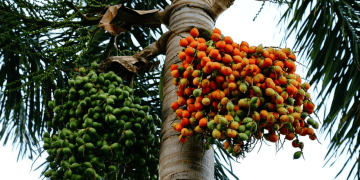KUALA LUMPUR (Dec 10): A combination of rising palm oil imports, recovering production in Indonesia, and a sharp decline in exports may signal the onset of demand rationing, according to Glenauk Economics, an agricultural commodity advisory firm.
In its latest report, Glenauk Economics noted that December palm oil imports are projected to rise, reversing the 44.4% decline recorded in November. This shift is attributed to improving output in Indonesia and the implementation of higher export taxes.
Price Pressures and Market Shifts
The firm highlighted that high prices are reshaping global market dynamics, with buyers gradually transitioning to alternative oils. Palm oil is losing competitiveness in key importing markets, where cooking oil producers have increased their reliance on soft oils. This trend has been observed not only in global markets but also within Malaysia.
Simultaneously, elevated prices are encouraging new supplies. The United States, for example, is exporting significant volumes of soybean oil, including shipments to India, following a robust domestic soybean harvest.
Policy Implications and Market Uncertainty
Concerns surrounding US policies, particularly the 45Z tax credit, were also addressed in the report. The credit, which incentivizes the production of clean transportation fuels such as sustainable aviation fuel, is yet to be finalized, raising apprehension among domestic buyers. This tax credit is intended to replace the B40 blenders credit for biofuels.
In Indonesia, biodiesel production remains a critical factor, with traders anticipating the announcement of the B40 biodiesel allocation. Glenauk Economics expects the allocation to fall between 13.5 and 13.9 million tonnes (15.5 to 16.0 million kilolitres).
Malaysian Production and Export Trends
Data from the Malaysian Palm Oil Board (MPOB) revealed that palm oil production experienced its second-largest decline of 2024 in November, dropping to 1.62 million tonnes. The decrease was linked to residual dryness from early 2024 and the ongoing impact of high rainfall levels.
Exports also fell sharply, declining by 14.7% month-on-month to 1.49 million tonnes in November. However, year-on-year exports increased by 5.7%. Glenauk Economics attributed the drop in exports to reduced demand due to palm oil’s price premium. The European Union’s usual winter buying slowdown, coupled with the postponement of the European Union Deforestation Regulation (EUDR), further contributed to weaker demand.
Price-sensitive markets such as India, Pakistan, and Bangladesh are increasingly turning to Indonesian palm oil or other alternatives. Additionally, China’s robust soybean crushing activities have positioned the country to export more soybean oil, adding to the competition.
Outlook and Implications
The report underscores the complex interplay of rising imports, fluctuating production levels, and shifting demand patterns within the global palm oil market. As high prices continue to reshape trade flows and influence buyer behavior, the prospect of demand rationing looms large. Policymakers and market participants alike will need to closely monitor these developments to adapt to the evolving landscape.
Stay informed on supply chain news at The Supply Chain Report. Free international trade tools are at ADAMftd.com.
#PalmOilMarket #GlobalTradeDynamics #GlenaukEconomics #PalmOilImports #IndonesianProduction #ExportTrends #CookingOilMarket #SoftOils #USSoybeanOil #SustainableFuel #B40Biodiesel #MalaysianPalmOil #MPOB #EUDeforestationRegulation #ChinaSoybeanOil #MarketOutlook

















